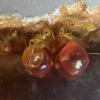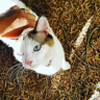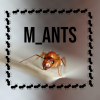There's already controversy about whether what's sold as C. fragilis are actually always really C. fragilis, but that said, "fraggles" are pretty well-known in Californian ant keeping circles as one of the must-have species, whether or not they are actually fragilis or something that looks a lot like them. IMHO, if you're buying, get from someone who has a good record of having sold fun, active, fast-growing "C. fragilis" colonies to other people, and what you get will likely be a fun, active, fast-growing colony even if people are arguing about what species they REALLY are.
I haven't heard of this. What would they be if not fragilis?
"Camponotus fragilis is similar to Camponotus absquatulator in color and stature, but does possess erect setae along the entire head margin; in minor workers these setae may be sparse, but there are always at least 2 or 3 between the level of the eyes and the posterolateral angles of the head. Separation of C. festinatus and C. fragilis is no easy matter as the two are distressingly similar in virtually every feature. Furthermore, since C. fragilis is allopatric to C. festinatus, the two species hypothesis has not the benefit of the test of sympatry that so usefully distinguishes C. festinatus from such species as Camponotus microps, Camponotus pudorosus, and Camponotus vafer. Comparative genetic and molecular studies, such as those that separate C. festinatus from its sympatric relatives, are not yet available. Until such data become available the distinctions between C. festinatus and C. fragilis will be a bit uncertain."
https://www.antwiki....otus_festinatus
There's even a debate right here on Formiculture about fragilis vs absquatulator but I'm not going to link to it as I hope it stays dead.
Edited by OhNoNotAgain, October 22 2020 - 7:16 PM.
Formiculture Journals::
Veromessor pergandei, andrei; Novomessor cockerelli
Camponotus fragilis; also separate journal: Camponotus sansabeanus (inactive), vicinus, laevigatus/quercicola
Liometopum occidentale; Prenolepis imparis; Myrmecocystus mexicanus (inactive)
Pogonomyrmex subnitidus and californicus (inactive)
Tetramorium sp.
Termites: Zootermopsis angusticollis
Isopods: A. gestroi, granulatum, kluugi, maculatum, vulgare; C. murina; P. hoffmannseggi, P. haasi, P. ornatus; V. parvus
Spoods: Phidippus sp.






















